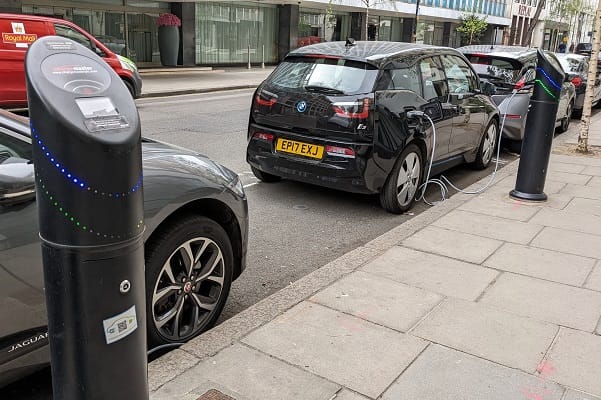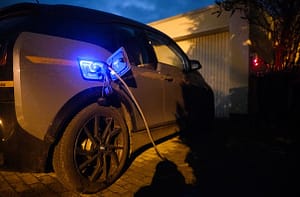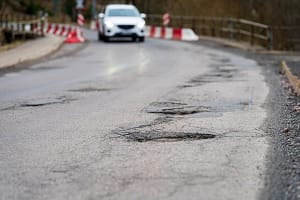According to data from Confused.com, over 50,000 council owned public electric vehicle (EV) chargers are expected to be installed within the next 2 years.
Currently, there are 28,734 council-owned public EV chargers, and 24,687 new ones could be installed in the next 2 years.
Currently, there is just 1 council owned EV charger per 36 EV drivers in the UK. That’s as there are currently 1,042,219 registered electric vehicles in the UK, according to the latest SMMT data.
And as a result, it seems residents are making their own calls to councils for more access to public charging. Local authorities across the UK have received more than 10,607 requests for more public charging access by residents in their local areas.
But the number of public charging points could be increasing further. Recent government announcements have revealed extra funding for councils and other bodies to improve EV charging across the UK.
In response to the growing demand for EV infrastructure amongst UK drivers, some local authorities are increasing their plans to roll out public charging.
This could help to make the EV transition more smooth for local residents.
While some councils reported having hundreds of chargers available to residents, others disclosed far fewer. Westminster City Council leads the charge when it comes to existing charge points with 2,468 already available in the area. Outside of London, Milton Keynes currently hosts the most chargers with 956, followed by Birmingham City Council with 613.
A recent survey has revealed a growing hesitancy among UK drivers to adopt EVs, citing infrastructure, affordability, and charging concerns as main barriers.
Despite the 2035 ban on the sale of new petrol and diesel cars, more than two thirds (69%) continue to drive petrol or diesel vehicles. Just 1 in 8 (12%) said they currently own a fully electric vehicle, while a further 13% own a plug-in hybrid. And shockingly, 47% of drivers are unaware of the 2035 ban, implying a lack of urgency when it comes to the need to go green.
Although, when asked about the likelihood of switching to an EV or plug-in hybrid, responses were mixed. Just 2 in 5 (38%) said they’re likely to consider making the switch, while another 37% said they’re unlikely. A quarter (25%) said they feel neutral, showing just how divided public opinion still is.
Cost remains the biggest obstacle. More than half (57%) said EVs are simply too expensive. A further 1 in 2 (52%) admitted they’d be more encouraged to buy one if more affordable models were available.
Charging is another major sticking point. Almost 2 in 5 (37%) say they would consider switching to an EV if there were more public charging points in their area. Almost 1 in 3 (30%) also believe public chargers should be free or subsidised in public places. Overall, more than 2 in 5 (41%) say they don’t see enough incentives -like grants or tax exemptions- to go electric. As the EV exemption from congestion charges in London ends in December this year, the provision to make the cost of going green easier seems to be fading away.
Even for those who already own an EV, there are challenges. Although almost 3 in 5 (59%) have installed a home charger, many still rely on public charging infrastructure. The average EV driver is willing to travel just over 5 miles (5.08 miles) to reach a charger.But this varies by location and personal circumstances.
For those who’ve tried public charging, frustrations are common. Almost half (45%) said they’ve encountered issues such as long wait times or chargers being fully occupied. Slow charging speeds are also common, experienced by almost 2 in 5 (38%) users. Another 1 in 3 (35%) say they’ve had difficulties with payment systems or EV charging apps. While nearly a third (31%) report being blocked by non-EV vehicles or parked cars not charging in charging bays.
When it comes to solutions, EV drivers are clear about what they want. Faster charging times would encourage half (50%) of people to use public chargers more often. While almost 2 in 5 (39%) say they’d be more inclined to use them if there were more chargers in convenient locations. Safety and accessibility are also front of mind, with a further 2 in 5 (39%) wanting improved safety and lighting at charging sites.
Looking at why EV owners made the switch, motivations are a mix of environmental and practical. A third (33%) say the main reason they drive an EV is due to environmental concerns. Lower running costs appeal is the priority for more than a quarter (27%) of owners. While 1 in 4 (24%) cite avoiding fluctuations in fuel prices as the main reason they choose to drive an EV. Interestingly, 1 in 4 (24%) say they prefer the driving experience overall, such as the smoother acceleration and quieter ride.
However, for many non-EV drivers, the barriers remain too high. Nearly a quarter (23%) say they won’t buy an EV because they can’t charge at home.1 in 5 (19%) say they still prefer petrol or diesel vehicles. And across EV and non-EV drivers, 1 in 3 (30%) believe EV infrastructure is growing too slowly.
To help drivers understand the EV landscape, Confused.com’s electric charging map helps drivers navigate this complex landscape. It provides an interactive map so drivers can see all public chargers available in their area, and shares key insights into the charging landscape in the UK. The aim is to offer drivers a clearer view of how accessible an EV could be to them, and support existing owners with finding local charge points.
Rhydian Jones, motoring expert at Confused.com car insurance said, “The UK government has set ambitious targets to phase out petrol and diesel cars by 2035. But our research shows that drivers still feel there’s still a long way to go in building the infrastructure needed to make the switch to electric.
“Many drivers feel that EVs are too expensive and that public charging options are often inconvenient. The stark differences between councils in charger availability only adds to the confusion and frustration.
“That’s why we’ve created our electric charging map. This helps drivers navigate the complex landscape.Providing an interactive map so drivers can see all public chargers available in their area, and sharing key insights to the charging landscape in the UK. It’s a small but important step towards making EV ownership more accessible and giving drivers the confidence to make the switch.
Get real time update about this post category directly on your device, subscribe now.




Leave a Comment